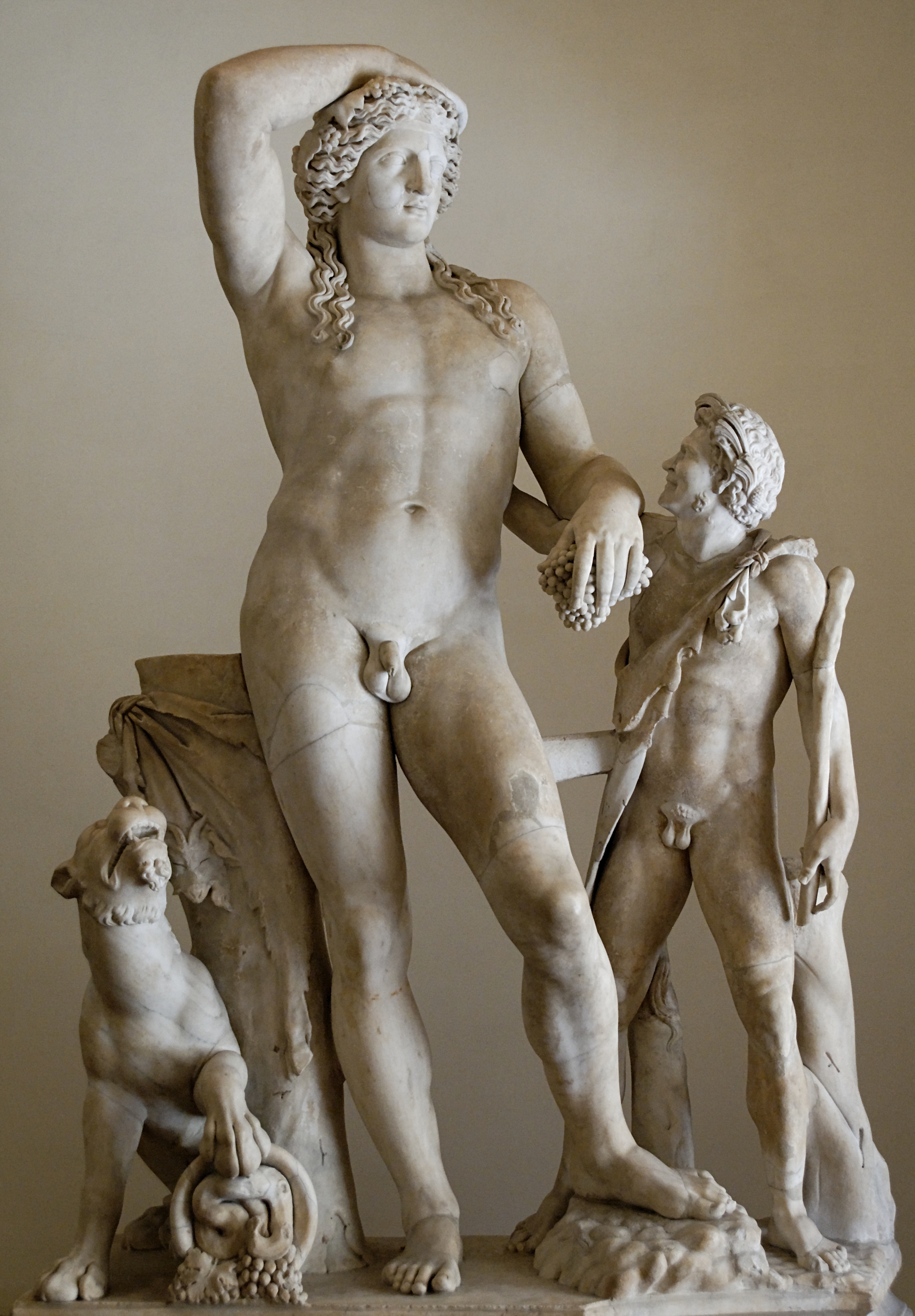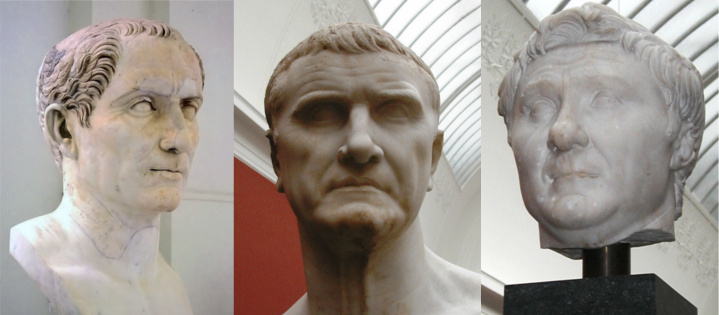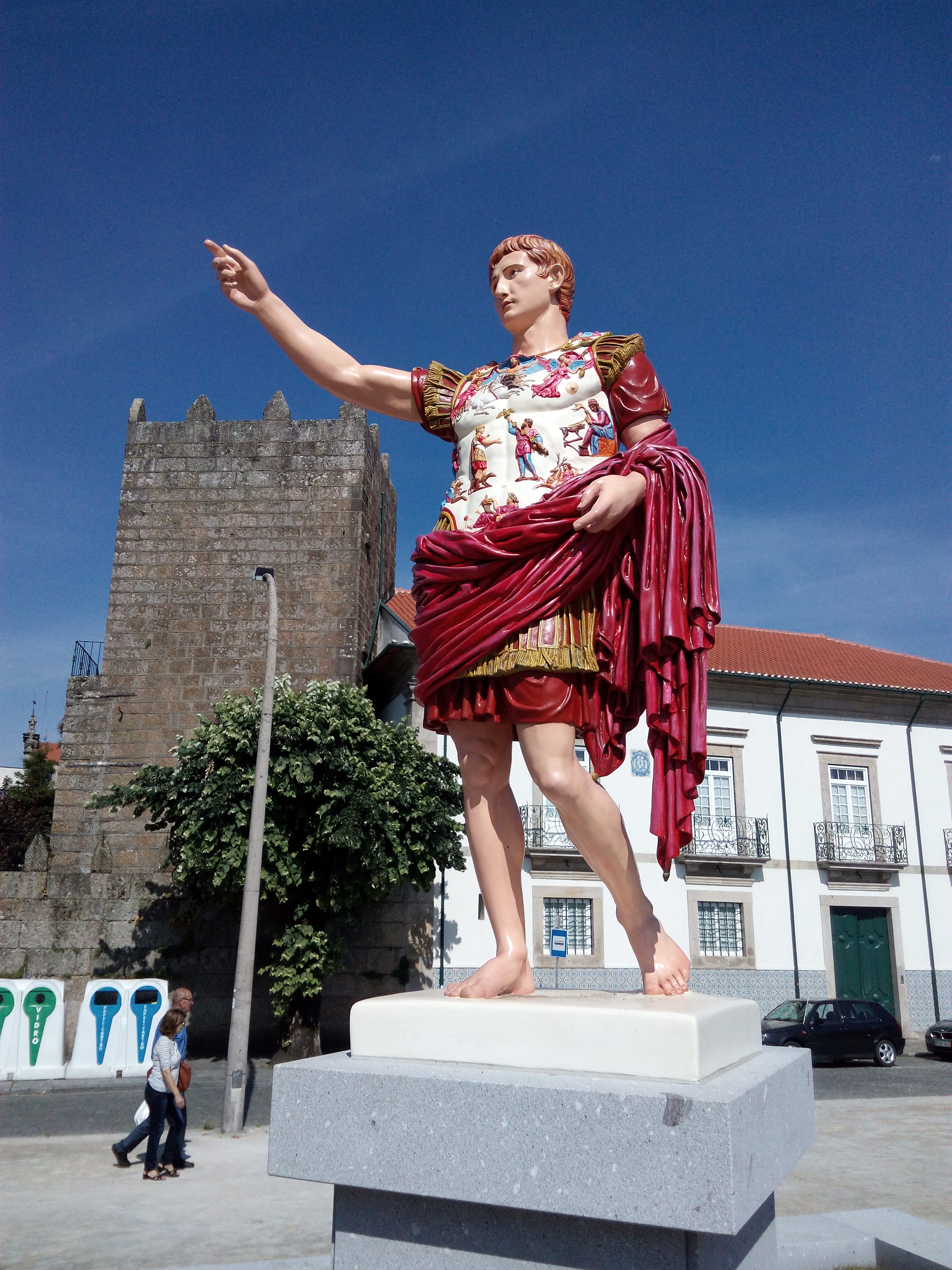|
Villa Of Livia
The Villa of Livia ( la, Ad Gallinas Albas) is an ancient Roman villa at Prima Porta, north of Rome, Italy, along the Via Flaminia. It may have been part of Livia Drusilla's dowry that she brought when she married Octavian (later called the emperor Augustus), her second husband, in 39 BC. However, it may also have been a gift given to her by Octavian upon their betrothal. The ancient sources (e.g. Suetonius) tell us that Livia returned to this villa following the marriage. It was her sumptuous country residence complementing her house on the Palatine Hill in Rome. Remarkable frescoes of garden views were found which have since been removed to the Palazzo Massimo museum in Rome. Location The villa occupied the height dominating the view down the Tiber Valley to Rome. Some of the walling that retained the villa's terraces can still be seen. The location was strategically important due to the iron-rich cliffs of red tuff that approach the river Tiber at this point, the confluence ... [...More Info...] [...Related Items...] OR: [Wikipedia] [Google] [Baidu] |
Villa
A villa is a type of house that was originally an ancient Roman upper class country house. Since its origins in the Roman villa, the idea and function of a villa have evolved considerably. After the fall of the Roman Republic, villas became small farming compounds, which were increasingly fortified in Late Antiquity, sometimes transferred to the Church for reuse as a monastery. Then they gradually re-evolved through the Middle Ages into elegant upper-class country homes. In the Early Modern period, any comfortable detached house with a garden near a city or town was likely to be described as a villa; most survivals have now been engulfed by suburbia. In modern parlance, "villa" can refer to various types and sizes of residences, ranging from the suburban semi-detached double villa to, in some countries, especially around the Mediterranean, residences of above average size in the countryside. Roman Roman villas included: * the ''villa urbana'', a suburban or country seat t ... [...More Info...] [...Related Items...] OR: [Wikipedia] [Google] [Baidu] |
Pliny's Natural History
The ''Natural History'' ( la, Naturalis historia) is a work by Pliny the Elder. The largest single work to have survived from the Roman Empire to the modern day, the ''Natural History'' compiles information gleaned from other ancient authors. Despite the work's title, its subject area is not limited to what is today understood by natural history; Pliny himself defines his scope as "the natural world, or life". It is encyclopedic in scope, but its structure is not like that of a modern encyclopedia. It is the only work by Pliny to have survived, and the last that he published. He published the first 10 books in AD 77, but had not made a final revision of the remainder at the time of his death during the AD 79 eruption of Vesuvius. The rest was published posthumously by Pliny's nephew, Pliny the Younger. The work is divided into 37 books, organised into 10 volumes. These cover topics including astronomy, mathematics, geography, ethnography, anthropology, human physiolog ... [...More Info...] [...Related Items...] OR: [Wikipedia] [Google] [Baidu] |
Villa Di Livia, Affreschi Di Giardino, Parete Corta Meridionale 01
A villa is a type of house that was originally an ancient Roman upper class country house. Since its origins in the Roman villa, the idea and function of a villa have evolved considerably. After the fall of the Roman Republic, villas became small farming compounds, which were increasingly fortified in Late Antiquity, sometimes transferred to the Church for reuse as a monastery. Then they gradually re-evolved through the Middle Ages into elegant upper-class country homes. In the Early Modern period, any comfortable detached house with a garden near a city or town was likely to be described as a villa; most survivals have now been engulfed by suburbia. In modern parlance, "villa" can refer to various types and sizes of residences, ranging from the suburban semi-detached double villa to, in some countries, especially around the Mediterranean, residences of above average size in the countryside. Roman Roman villas included: * the ''villa urbana'', a suburban or country seat t ... [...More Info...] [...Related Items...] OR: [Wikipedia] [Google] [Baidu] |
Museo Nazionale Romano
The National Roman Museum (Italian: ''Museo Nazionale Romano'') is a museum, with several branches in separate buildings throughout the city of Rome, Italy. It shows exhibits from the pre- and early history of Rome, with a focus on archaeological findings from the period of Ancient Rome. History Founded in 1889 and inaugurated in 1890, the museum's first aim was to collect and exhibit archaeologic materials unearthed during the excavations after the union of Rome with the Kingdom of Italy. The initial core of its collection originated from the Kircherian Museum, archaeologic works assembled by the antiquarian and Jesuit priest, Athanasius Kircher, which previously had been housed within the Jesuit complex of Sant'Ignazio. The collection was appropriated by the state in 1874, after the suppression of the Society of Jesus. Renamed initially as the Royal Museum, the collection was intended to be moved to a ''Museo Tiberino'' (Tiberine Museum), which was never completed. In 1901 the ... [...More Info...] [...Related Items...] OR: [Wikipedia] [Google] [Baidu] |
Fresco
Fresco (plural ''frescos'' or ''frescoes'') is a technique of mural painting executed upon freshly laid ("wet") lime plaster. Water is used as the vehicle for the dry-powder pigment to merge with the plaster, and with the setting of the plaster, the painting becomes an integral part of the wall. The word ''fresco'' ( it, affresco) is derived from the Italian adjective ''fresco'' meaning "fresh", and may thus be contrasted with fresco-secco or secco mural painting techniques, which are applied to dried plaster, to supplement painting in fresco. The fresco technique has been employed since antiquity and is closely associated with Italian Renaissance painting. The word ''fresco'' is commonly and inaccurately used in English to refer to any wall painting regardless of the plaster technology or binding medium. This, in part, contributes to a misconception that the most geographically and temporally common wall painting technology was the painting into wet lime plaster. Even in appar ... [...More Info...] [...Related Items...] OR: [Wikipedia] [Google] [Baidu] |
Villa Di Livia, Affreschi Di Giardino, Parete Corta Meridionale, Pianta Con Uccelli
A villa is a type of house that was originally an ancient Roman upper class country house. Since its origins in the Roman villa, the idea and function of a villa have evolved considerably. After the fall of the Roman Republic, villas became small farming compounds, which were increasingly fortified in Late Antiquity, sometimes transferred to the Church for reuse as a monastery. Then they gradually re-evolved through the Middle Ages into elegant upper-class country homes. In the Early Modern period, any comfortable detached house with a garden near a city or town was likely to be described as a villa; most survivals have now been engulfed by suburbia. In modern parlance, "villa" can refer to various types and sizes of residences, ranging from the suburban semi-detached double villa to, in some countries, especially around the Mediterranean, residences of above average size in the countryside. Roman Roman villas included: * the ''villa urbana'', a suburban or country seat th ... [...More Info...] [...Related Items...] OR: [Wikipedia] [Google] [Baidu] |
Battle Of Carrhae
The Battle of Carrhae () was fought in 53 BC between the Roman Republic and the Parthian Empire near the ancient town of Carrhae (present-day Harran, Turkey). An invading force of seven legions of Roman heavy infantry under Marcus Licinius Crassus was lured into the desert and decisively defeated by a mixed cavalry army of heavy cataphracts and light horse archers led by the Parthian general Surena. On such flat terrain, the Legion proved to have no viable tactics against the highly-mobile Parthian horsemen, and the slow and vulnerable Roman formations were surrounded, exhausted by constant attacks, and eventually crushed. Crassus was killed along with the majority of his army. It is commonly seen as one of the earliest and most important battles between the Roman and Parthian Empires and one of the most crushing defeats in Roman history. According to the poet Ovid in Book 6 of his poem ''Fasti'', the battle occurred on the 9th day of June. Crassus, a member of the First Triu ... [...More Info...] [...Related Items...] OR: [Wikipedia] [Google] [Baidu] |
Crassus
Marcus Licinius Crassus (; 115 – 53 BC) was a Roman general and statesman who played a key role in the transformation of the Roman Republic into the Roman Empire. He is often called "the richest man in Rome." Wallechinsky, David & Wallace, Irving.Richest People in History Ancient Roman Crassus. Trivia-Library. ''The People's Almanac''. 1975–1981. Web. 23 December 2009."Often named as the richest man ever, a more accurate conversion of sesterce would put his modern figure between $200 million and $20 billion." Peter L. BernsteinThe 20 Richest People Of All Time/ref> Crassus began his public career as a military commander under Lucius Cornelius Sulla Lucius Cornelius Sulla Felix (; 138–78 BC), commonly known as Sulla, was a Roman general and statesman. He won the first large-scale civil war in Roman history and became the first man of the Republic to seize power through force. Sulla ha ... during his Sulla's civil war, civil war. Following Sulla's assumpt ... [...More Info...] [...Related Items...] OR: [Wikipedia] [Google] [Baidu] |
Parthian Empire
The Parthian Empire (), also known as the Arsacid Empire (), was a major Iranian political and cultural power in ancient Iran from 247 BC to 224 AD. Its latter name comes from its founder, Arsaces I, who led the Parni tribe in conquering the region of Parthia in Iran's northeast, then a satrapy (province) under Andragoras, who was rebelling against the Seleucid Empire. Mithridates I (r. c. 171–132 BC) greatly expanded the empire by seizing Media and Mesopotamia from the Seleucids. At its height, the Parthian Empire stretched from the northern reaches of the Euphrates, in what is now central-eastern Turkey, to present-day Afghanistan and western Pakistan. The empire, located on the Silk Road trade route between the Roman Empire in the Mediterranean Basin and the Han dynasty of China, became a center of trade and commerce. The Parthians largely adopted the art, architecture, religious beliefs, and royal insignia of their culturally heterogene ... [...More Info...] [...Related Items...] OR: [Wikipedia] [Google] [Baidu] |
Braccio Nuovo
The Vatican Museums ( it, Musei Vaticani; la, Musea Vaticana) are the public museums of the Vatican City. They display works from the immense collection amassed by the Catholic Church and the papacy throughout the centuries, including several of the most well-known Roman sculptures and most important masterpieces of Renaissance art in the world. The museums contain roughly 70,000 works, of which 20,000 are on display, and currently employ 640 people who work in 40 different administrative, scholarly, and restoration departments. Pope Julius II founded the museums in the early 16th century. The Sistine Chapel, with its ceiling and altar wall decorated by Michelangelo, and the Stanze di Raffaello (decorated by Raphael) are on the visitor route through the Vatican Museums. In 2020, due to the COVID-19 pandemic, the Vatican Museums were visited by only 1,300,000 persons, a drop of 81 percent from the number of visitors in 2019, but still enough to rank the museums fourth among th ... [...More Info...] [...Related Items...] OR: [Wikipedia] [Google] [Baidu] |
Vatican Museums
The Vatican Museums ( it, Musei Vaticani; la, Musea Vaticana) are the public museums of the Vatican City. They display works from the immense collection amassed by the Catholic Church and the papacy throughout the centuries, including several of the most well-known Roman sculptures and most important masterpieces of Renaissance art in the world. The museums contain roughly 70,000 works, of which 20,000 are on display, and currently employ 640 people who work in 40 different administrative, scholarly, and restoration departments. Pope Julius II founded the museums in the early 16th century. The Sistine Chapel, with its ceiling and altar wall decorated by Michelangelo, and the Stanze di Raffaello (decorated by Raphael) are on the visitor route through the Vatican Museums. In 2020, due to the COVID-19 pandemic, the Vatican Museums were visited by only 1,300,000 persons, a drop of 81 percent from the number of visitors in 2019, but still enough to rank the museums fourth among th ... [...More Info...] [...Related Items...] OR: [Wikipedia] [Google] [Baidu] |
Augustus Of Prima Porta
Augustus of Prima Porta ( it, Augusto di Prima Porta) is a full-length portrait statue of Augustus, Augustus Caesar, the first emperor of the Roman Empire. The marble statue stands tall and weighs . The statue was discovered on April 20, 1863, during archaeological excavations directed by Giuseppe Gagliardi at the Villa of Livia owned by Augustus' third and final wife, Livia, Livia Drusilla in Prima Porta. Livia had retired to the Roman villa, villa after Augustus's death in AD 14. The statue was first publicized by the German archeologist G. Henzen and was put into the (Rome 1863). Carved by expert Greek sculptors, the statue is assumed to be a copy of a lost bronze original displayed in Rome. The Augustus of Prima Porta is now displayed in the (New Arm) of the Vatican Museums. Since its discovery, it has become the best known of Augustus' portraits and one of the most famous sculptures of the ancient world. Original The imagery on the cuirass (typical of Legatus, legates) ref ... [...More Info...] [...Related Items...] OR: [Wikipedia] [Google] [Baidu] |



.jpg)


%2C_Nisa_mint.jpg)
_of_the_Pinacoteca_Vaticana.jpg)
